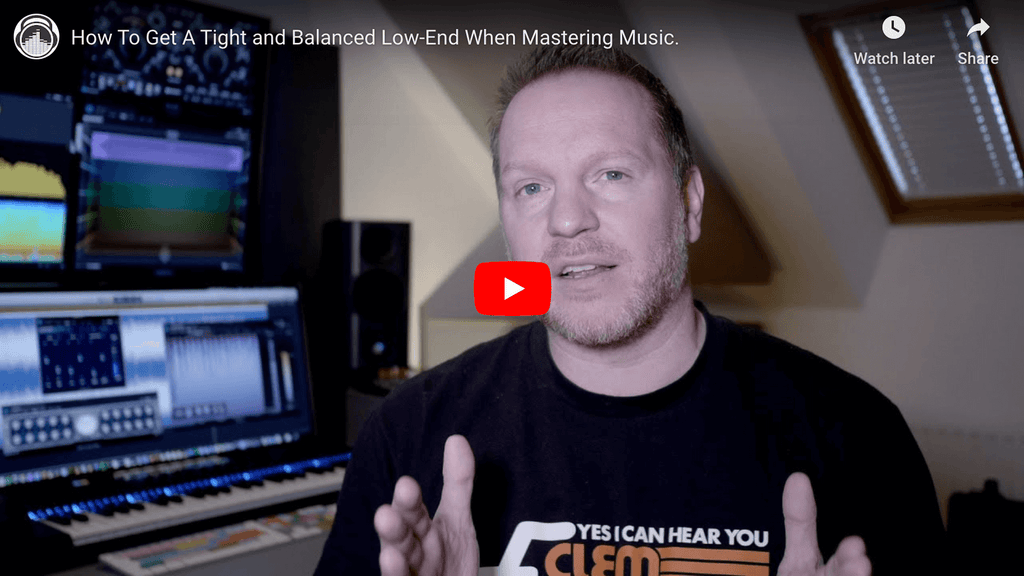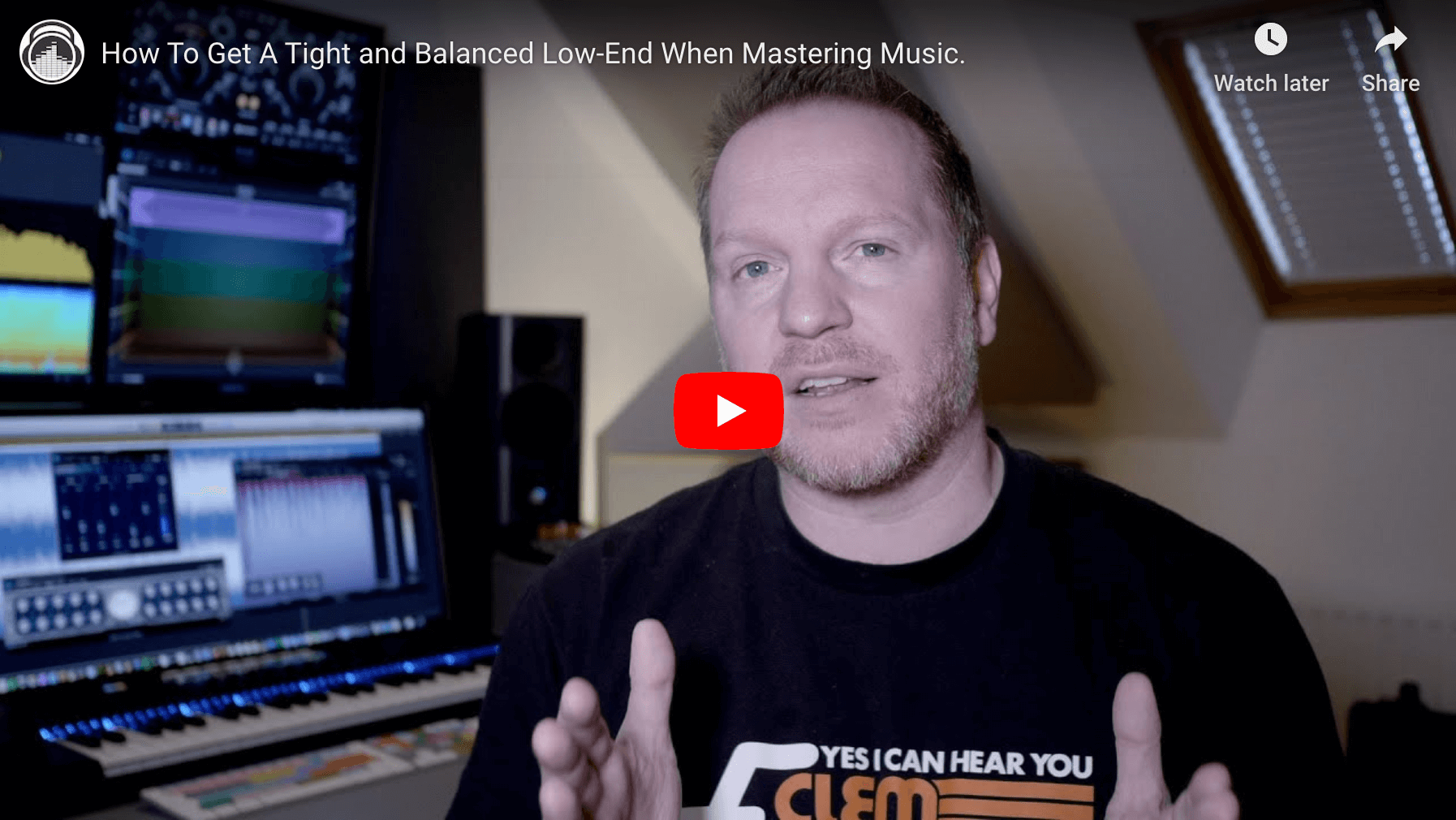To get a tight and balanced low-end when mastering music, ensure that the mix has good low-end balance and use EQ and compression judiciously. Getting a tight and balanced low-end is all about managing the bass frequencies and optimizing your mix for the mastering process.
Start by ensuring that your mix has good low-end balance before proceeding to the mastering stage. Use gentle EQ to get rid of any problematic frequencies and avoid overcompressing the low-end. This will help ensure a tight and focused bass response in your final master.
In addition, consider using tools like limiters and saturation to add warmth and character to your low-end.

Credit: m.youtube.com
Eq Techniques For Balancing The Low End
Achieving a tight and balanced low end in mastering music is crucial for a polished sound. EQ techniques can help to balance out the low frequencies, removing any muddiness and adding clarity to the mix. By carefully working through the low end, it’s possible to create a powerful and controlled sound that will translate well across a range of playback devices.
If you’re working on mastering music, you know that getting a tight and balanced low end is critical. But achieving it isn’t always straightforward. EQ techniques can go a long way in helping you balance your low end, ultimately leading to better sound quality. In this blog post, we’ll go over some of the most effective EQ techniques for balancing the low end. We’ll cover Notch Filtering, Low Shelf EQ, High Pass Filtering, and Mid-Side EQing.
Notch Filtering
Notch filtering is an EQ technique that helps you remove a particular frequency from a mix. This technique works best when you know which frequency is causing issues in your mix. By setting a narrow notch using an EQ, you can remove that problematic frequency from your mix. This helps to clean up your low end. Use this technique carefully, as removing too much of a frequency could leave your mix sounding weak or muffled.
Low Shelf Eq
Low shelf EQ is great for adding or removing bass from a mix. It allows you to boost or cut all frequencies below a certain point, which can be helpful when you want to balance your low end. For example, if you feel your mix has too much bass, you can use low shelf EQ to remove some of the lower frequencies. On the other hand, if your mix could use a bit more bass, you can use low shelf EQ to boost frequencies below a specific point.
High Pass Filtering
High pass filtering is the process of removing low frequencies from a mix. It is useful in situations where there is unwanted low-frequency content in a mix. For example, if you have a mix that is bass-heavy, you can use high pass filtering to remove some of the bass frequencies from the rest of the mix. It’s essential to be careful with high pass filtering, as removing too much of the low end could leave your mix sounding thin or weak.
Mid-side Eqing
Mid-side EQing is a technique that separates the stereo information of a mix and processes it individually. When balancing your low end, it can be helpful to use mid-side EQing to make sure the low end is properly balanced between the left and right channels. This technique allows you to isolate problematic frequencies and adjust their balance between the left and right channels. This helps you achieve a more balanced low end in your mix. In conclusion, these EQ techniques are crucial when it comes to balancing the low end in your mixes. Notch filtering, low shelf EQ, high pass filtering, and mid-side EQing all play their part. Remember, it is important to use them effectively and sparingly, ensuring that you achieve the perfect balance without removing too much of the low end or causing other issues in the mix.

Credit: www.masteringthemix.com
Other Tips And Tricks For Tightening The Low End
To achieve a tight and balanced low end in mastering music, there are a few other tips and tricks to consider. Utilizing high-pass filtering, tuning your kick and bass frequencies, and using sidechain compression can all contribute to a cleaner and more defined low end in your music productions.
Other Tips And Tricks For Tightening The Low End Apart from EQing and balancing the mix, there are other ways to tighten your low end when mastering music. These techniques are often used by mastering engineers and producers to add excitement, warmth, and clarity to the low end. Below are some of the go-to techniques for tightening the low end. H3: Saturation And Harmonic Excitement Saturation is the process of adding harmonic excitement to the low end of your mix. This technique involves using analog or digital saturation plugins to add harmonic distortion to your low end. Saturation enriches the harmonic content of the bass, making it more prominent and fuller without necessarily increasing the volume. You can experiment with different types of saturation plugins to find the one that best suits your mix. H3: Multiband Compression Multiband compression is a popular technique used to control the dynamics of specific frequency ranges in your mix. Instead of applying compression to the whole mix, you can apply different compression settings to different frequency ranges. This helps to tame any harsh frequencies and tighten the low end of your mix. You can use plugins like Fabfilter Pro-MB, Waves C6, or iZotope Ozone to apply Multiband Compression. H3: Stereo Widening Techniques Stereo widening techniques like Mid-side EQing and stereo imaging plugins help to create a wider sound field for your low end. You can use a stereo-imaging plugin like Ozone Imager to widen the stereo field of your low end to create a more spacious and immersive sound. Make sure you use stereo widening sparingly and avoid overdoing it as it may cause phase issues. H3: Using Subharmonic Generators Subharmonic generators are plugins that add extra low frequency content to your mix. These plugins generate subharmonic frequencies that are an octave below your existing bass. This technique can be used to add weight, depth, and warmth to your low end. The Waves MaxxBass plugin is an excellent example of a subharmonic generator. H3: Limiting And Dynamic EQing Limiting involves setting a maximum level for the low end of your mix. Applying limiting to your low end helps to control any excessive peaks and ensure that the bass stays tight and balanced. Dynamic EQing is another popular technique used to control particular frequency ranges in your low end. The Pro-Q 3 plugin by Fabfilter is an excellent tool for dynamic EQing. In conclusion, mastering the low end of your mix is crucial for creating a professional sounding track. Using these tips and techniques, you can tighten and balance your low end to make it sound powerful, punchy, and clear. However, note that these techniques should be used in moderation, and it’s essential to trust your ears when mixing and mastering your music. Happy mixing!

Credit: www.masteringthemix.com
Frequently Asked Questions For How To Get A Tight And Balanced Low End When Mastering Music
How Do You Get Consistent Low End?
To get consistent low end, consider the following tips: properly monitor your audio levels, ensure your speakers and headphones are calibrated for neutral representation, use the right mixing techniques such as high-pass filtering, avoid over-compressing, and establish a good recording environment with sound treatment and isolation measures.
How Do You Balance A Low End Mix?
Careful balancing of low-end mix involves adjusting the levels of bass frequencies to create a clear and defined sound. The key techniques to achieve balance include using high-pass filters to remove unwanted low frequencies, utilizing EQ to emphasize and cut specific frequency ranges, and using compression to manage dynamic range.
Additionally, using reference tracks to compare and fine-tune the mix is crucial.
What Is An Ideal Eq Type To Use During Mastering?
The ideal EQ type during mastering depends on the music genre, mix, and desired outcome. Generally, a linear phase EQ is recommended as it has less phase distortion. However, a minimum phase EQ gives a more natural sound and is more commonly used.
The key is to listen and adjust to achieve a balanced and polished sound.
What Db Level Should Your Mix Be Before Mastering?
The ideal dB level for a mix before mastering is between -6 and -3dB. This allows for ample headroom and prevents clipping and distortion during the mastering process. However, it is important to note that the specific level can vary depending on the genre, the overall loudness of the mix, and personal preference.
Conclusion
Overall, achieving a tight and balanced low end is essential to the success of your mastered music. By applying the tips and techniques outlined in this post, you’ll be able to nail down your low-end mix and produce music that sounds clean and professional.
Always remember to keep your mix simple, take time to test on different speakers and have patience when working on your low end. By utilizing these tools, you’ll have a strong foundation for mastering your low end and taking your music to the next level.